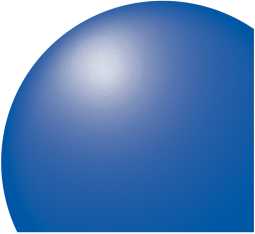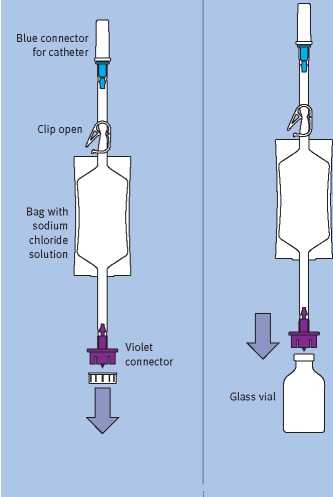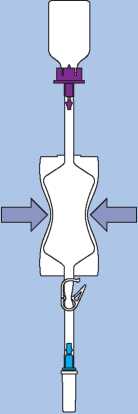Mitocin 20 Mg Powder And Solvent For Intravesical Solution
mitocin 20 mg
MITOMYCIN
LF00000288

Read all of this leaflet carefully before you start using this medicine because it contains important information for you.
• Keep this leaflet. You may need to read it again.
• If you have any further questions, ask your doctor or pharmacist.
• This medicine has been prescribed for you, only. Do not pass it on to others. It may harm them, even if their signs of illness are the same as yours.
• If you get any side effects, talk to your doctor or pharmacist. This includes any possible side effects not listed in this leaflet
Package leaflet: Information for the user
mitocin 20 mg
powder and solvent for intravesical solution Active substance: mitomycin
What is in this leaflet:
1. What Mitocin is and what it is used for.
2. What you need to know before you use Mitocin
3. Howto use Mitocin
4. Possible side effects
5. How to store Mitocin
6. Contents of the pack and other information
1. What Mitocin is and what it is used for
Mitomycin is a medicine for the treatment of cancer, i.e. a medicine which prevents or considerably delays the division of active cells by influencing their metabolism in various ways. The therapeutic application of medicinal products for the treatment of cancer is based on the fact that one way in which cancer cells differ from normal cells in the body is that the rate of cell division is increased due to a lack of control of their growth.
Therapeutic Indications Intravesical application
Application in the urinary bladder (intravesical application) for the prevention of a relapse in the case of superficial urinary bladder cancer after the ablation of tissue through the urethra (transurethral resection).
2. What you need to know before you use Mitocin
Mitocin must not be administered in the case of intravesical use
• if you are hypersensitive (allergic) to mitomycin or any of the other constituents of Mitocin.
• during breastfeeding
• if you have perforation of the bladder wall
Warnings and precautions
Talk to your doctor or pharmacist before using Mitocin
• if you are suffering from impaired lung, kidney or liver function.
• if your general state of health is not good
• if you are undergoing radiation therapy
• if you are being treated with other cytostatics (substances which inhibit cell growth/cell division)
• if you have inflammation of the urinary bladder (in case of intravesical administration).
• if you have been told that you have bone marrow depression (your bone marrow is not able to make the blood cells that you need); it may get worse (especially in elderly and during long term treatment with mitomycin); infection may be aggravated due to bone marrow depression and may lead to fatal conditions
• if you are capable of having a baby as mitomycin may affect your ability to have children in the future.
You will be given the treatment under the supervision of a healthcare professional who is experienced in this particular branch of medicine to minimise any unwanted side effects in the injection site.
Children and adolescents
The use of mitomycin in children and adolescents is not recommended.
Other medicines and Mitocin
Tell your doctor or pharmacist if you are taking/ using, have recently taken/used or might take/use any other medicines.
Through the additional use of other types of therapy (in particular other anti-cancer medicines, radiation) which also have harmful effects on you, it is possible that the adverse effects of mitomycin will be reinforced.
There are reports from animal experiments that the effect of mitomycin is lost, if administered together with Vitamin B6
You should not get vaccinated, especially with live vaccines during mitomycin treatment.
Please note that the above also applies to medications used in the recent past.
Pregnancy, breastfeeding and fertility
Mitomycin should not be used during pregnancy. Your doctor has to evaluate the benefit against the risk of harmful effects on your child, if mitomycin treatment during pregnancy is necessary.
Women of child-bearing age should avoid becoming pregnant. Contraceptive measures must be taken by both male and female patients during and for at least six months after cessation of therapy. Still, if you become pregnant during this period you must immediately inform your doctor.
Breast-feeding must be discontinued before you start to use mitomycin.
Driving and using machines
Even when used in accordance with instructions this medicine may cause nausea and vomiting and thereby reduce your reaction times to such an extent that the ability to drive a motor vehicle or operate machinery is impaired. This applies in particular in conjunction with alcohol.
Mitocin 20 mg after reconstitution in the bag containing the solvent, contains 3.08 mmol (70.8 mg) of sodium per 20 ml of solution. This should be taken into consideration by patients on a controlled sodium diet.
3. How to use Mitocin
Mitomycin should only be administered by healthcare professionals experienced in this kind of therapy.
Mitomycin is intended to be introduced into the urinary bladder (intravesical instillation) after being dissolved.
Your doctor will prescribe a dose and treatment regimen that is right for you.
If you use more Mitocin than you should
If you have been accidentally given a higher dose you may experience symptoms such as fever, nausea, vomiting and blood disorders. Your doctor may give you supportive treatment for any symptoms that may occur.
If you have any further questions on the use of this medicine, please ask your doctor or pharmacist.
4. POSSIBLE SIDE EFFECTS
Like all medicines, this medicine can cause side effects, although not everybody gets them.
Possible side effects following administration into a vein
Severe lung disease presenting as shortness of breath, dry cough and crackles during breath-in (interstitial pneumonia) as well as severe renal dysfunction (nephrotoxicity) may occur. If you notice any of the above reactions please inform your doctor immediately because mitomycin therapy must be stopped.
Very common side effects (more than 1 in 10 patients)
• Blood disorders: Inhibition of blood cell production in the bone marrow; decreased number of white blood cells (leucopenia) increasing the risk of infections; decreased number of platelets (thrombocytopenia) causing bruises and bleedings
• Nausea, vomiting
Common side effects (fewer than 1 in 10, but more than 1 in 100 patients)
• Lung disorders presenting as shortness of breath, dry cough and inspiratory crackles (interstitial pneumonia)
• Dyspnoea, cough, shortness of breath
• Skin rashes and irritation of the skin
• Numbness, swelling and painful redness on palms and soles (palmar-plantar erythema)
• Kidney disorders (renal dysfunction, nephrotoxicity, glomerulopathy, increased levels of creatinine in the blood) - the kidneys may not be able to work
• Inflammation of connective tissue (cellulitis) and death of tissue (tissue necrosis) following accidental injection into the surrounding tissue (extravasation)
Uncommon side effects (fewer than 1 in 100, but more than 1 in 1,000 patients)
• Inflammation of a mucous membrane (mucositis)
• Inflammation of the mucosa of the mouth (stomatitis)
• Diarrhoea
• Hair loss (alopecia)
• Fever
• Loss of appetite (anorexia)
Rare side effects (fewer than 1 in 1,000, but more
than 1 in 1 0,000 patients)
• Life-threatening infection
• Blood poisoning (sepsis)
• Decrease in number of red blood cells sometimes together with a acute renal dysfunction (haemolytic anaemia, microangiopathic-haemolytic anaemia (MAHA syndrome), Haemolytic uraemic syndrome (HUS))
• Loss of cardiac function (heart failure) after previous therapy with other anti-cancer medicines (anthracyclines)
• Increase in blood pressure in the vasculature of the lungs, e,g, leading to shortness of breath, dizziness and fainting (pulmonary hypertension)
• Obstructive disease of the pulmonary veins (pulmonary veno-occlusive disease [PVOD])
• Liver disease (liver dysfunction)
• Increased levels of liver enzymes (transaminases)
• Yellowing of the skin and whites of the eyes (icterus)
• Blockage of the small veins in the liver (veno-occlusive disease [VOD] of the liver) leading to fluid retention, increased liver size and raised levels of bilirubin in the blood
• Widespread skin rash
Very rare side effects (fewer than 1 of 10,000
patients)
• Severe allergic reaction (symptoms may include faintness, skin rash or hives, itching, swelling of lips, face and airway with difficulty in breathing, loss of consciousness)
Possible side effects following installation in the bladder
Common side effects(fewer than 1 in 10, but more than 1 in 1 00 patients)
• Skin rashes (exanthema, allergic skin rash, contact dermatitis)
• Numbness, swelling and painful redness on palms and soles (palmar-plantar erythema)
• Bladder inflammation (cystitis) - which may be accompanied with blood in the bladder/urine
• Painful urination, excessive frequent urination sometimes at night (dysuria, pollakisuria, nocturia)
• Blood in urine (hematuria)
• Local irritation of the bladder wall
Rare side effects (fewer than 1 in 1,000, but more than 1 in 1 0,000 patients)
• Widespread skin rash
Very rare side effects (fewer than 1 of 10,000 patients)
• Severe inflammation of the bladder where portions of the bladder wall may undergo tissue death (allergic cystitis, necrotizing cystitis)
• Stenosis of the efferent urinary tract
• Reduction in bladder capacity
• Hardening of bladder wall (bladder wall calcification, bladder wall fibrosis)
If you get any side effects, talk to your doctor or pharmacist. This includes any side effects not listed in this leaflet.
5. How to store Mitocin
Do not store above 25°C.
Keep the vial in the outer carton in order to protect from light.
Chemical and physical in-use stability of reconstituted solution has been demonstrated at room temperature and light effect with:
• sodium chloride 9 mg/ml (0.9%) solution (for intravesical use) for 2 hours
All reconstituted solutions should be used immediately.
Keep this medicine out of the sight and reach of children.
Do not use this medicine after the expiry date which is stated on the label and folding box after “EXP”. The expiry date refers to the last day of that month.
Do not throw away any medicines via wastewater or household waste. Ask your pharmacist how to throw away medicines you no longer use. These measures will help protect the environment
6. Contents of the pack and other information What Mitocin contains
The active substance is mitomycin.
1 vial powder for intravesical solution contains 20 mg mitomycin. After reconstitution 1 ml intravesical solution contains 1 mg mitomycin.
The excipients are:
Powder for intravesical use:
Mannitol (Ph.Eur.),
hydrochloric acid 36% and sodium hydroxide for pH adjustment
Solvent for intravesical solution:
Sodium chloride and water for injections.
What Mitocin looks like and contents of the pack
Mitomycin is a grey powder.
Mitocin powder and solvent for intravesical solution (instillation set) is available in packs with 1, 4 or 5 amber glass vials. Instillation sets for intravesical instillation also include 1, 4 or 5 PVC bags with a volume of 20 ml containing sodium chloride 9 mg/ ml (0.9%) solution (for intravesical use) and 1,4 or 5 Tiemann catheters.
Not all pack sizes may be marketed.
Marketing Authorisation Holder and Manufacturer
Marketing Authorisation Holder Speciality European Pharma Limited 14Took’s Court, London EC4A 1 LB Tel: +44 (0)20 7421 7400 Fax:+44 (0)20 7421 7401
Manufacturer
Chester Medical Solutions
3-4 Apex Court
Bassendale Road
Brom borough
Wirral CH62 3 RE
United Kingdom
This medicinal product is authorised in the Member States of the EEA under the following names:
Belgium
Mitomycin Speciality European Pharma 20 mg, Poudre et solvant pour administration intravesicale / Pulver und Losungsmittel zur Herstellung einer Losung zur intravesikalen Anwendung / Poeder en oplosmiddel voor oplossing voor intravesicaal gebruik
Espana
Mitocin 20 mg, Polvo y disolvente para solucion intravesical
Finland
Mitocin 20 mg, Injektiokuiva-aine ja liuotin, Liuos virtsarakkoon
Germany
Mitocin 20 mg Pulver und Losungsmittel zur Herstellung einer Losung zur intravesikalen Anwendung
Italy
Mitomycina Pharma Resources 20 mg, Polvere e solvente per soluzione endovescicale
Luxembourg
Mitomycin SEP 20 mg, Poudre et solvant pour administration intravesicale / Pulver und Losungsmittel zur Herstellung einer Losung zur intravesikalen Anwendung
The Netherlands
Mitomycine SEP 20 mg, Poeder en oplosmiddel voor oplossing voor intravesicaal gebruik
Norway
Mitomycin Speciality European Pharma 20 mg, Pulver og vasske til intravesikal opplosning
Sweden
Mitomycin SEP 20 mg, Pulver och vatska till intravesikal losning
United Kingdom
Mitocin 20 mg, powder and solvent for intravesical solution
This package leaflet was last approved in 11/2013
The following information is intended for medical or healthcare professionals only:
General Information
Contacts with the skin and mucous membranes must be avoided.
Method of administration
Preparation of the ready-to-use solution for intravesical administration
The contents of 1 - 2 vials of Mitocin 20 mg are dissolved in 20 - 40 ml of sodium chloride 9 mg/ml (0.9%) solution (for intravesical use).
For the use of the instillation set of Mitocin 20 mg the corresponding instructions for use must be followed. The sodium chloride 9 mg/ml (0.9%) solution (for intravesical use) in the bag is used for preparation of the reconstituted solution.
Incompatibilities
Incompatibilities occur with highly acidic or alkaline substances. The optimum pH value for the ready-to-use mitomycin solution is 7.0.
Note
• All reconstituted solutions are intended for immediate use!
• Only clear solutions may be used.
• The contents of the vials are intended for single use only.
• Unused solutions are to be discarded.
Instructions for use for the solvent for intravesical solution (instillation set)
... 1
Remove the bag with the sodium chloride 9 mg/ml (0.9%) solution (for intravesical use) out of the transparent protective film.
The white clip below the bag containing the sodium chloride 9 mg/ml (0.9%) solution (for intravesical use) should be and remain open.
Pull the protective cap off the violet adapter. Ensure that the disposal bag is readily available.
... 2
Take the Mitocin vial out of the folding box.
Remove the white cap from the vial.
Place the violet adapter centrally and vertically on the rubber stopper and press the violet adapter into the rubber stopper of the vial until it locks into place.
Bend the part of the violet adapter located in the tube at the predetermined breaking point backwards and forwards until the cone breaks off and the connection is open.
Hold the solvent-containing bag with the vial facing downwards.
Squeeze the bag together several times until the solvent has flowed into the vial.
Turn the vial upwards.
Press the air out of the solvent bag into the vial: if the pressure falls, the mitomycin solution collects in the bag.
Repeat this step once or twice if necessary, it is acceptable for a small residue of the liquid to finally remain in the Mitocin vial.
...6
When you have inserted the catheter into the urethra / bladder and would like to begin with the instillation, pull the transparent cap off the blue catheter adapter. Then push the blue catheter adapter firmly into the green attachment of the catheter.
...7
Break off the blue catheter adapter in the tube section at the predetermined breaking point in such a way that the mitomycin solution can flow through the catheter into the bladder.
In order to prevent subsequent trickling you can close the clip after instillation.
Please use the disposal bag to dispose of all parts which have come into contact with the mitomycin solution in the special waste.
^Mitocin
Instillation set 20m,







^Mitocin
Instillation set
mg
^Speciality
European
Pharma
LF00000290
Instructions for use
for the solvent for intravesical solution (instillation set)

Mitocin
Instillation set 20 mg